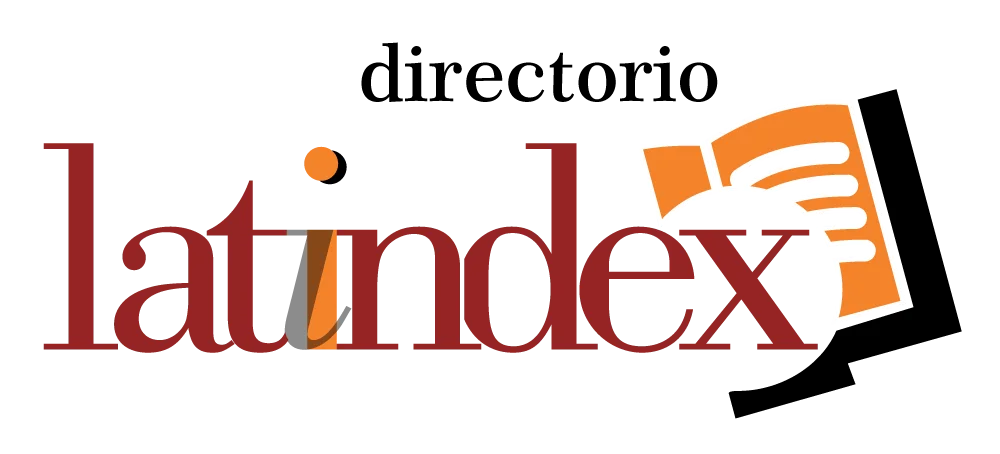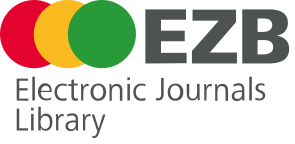Giftedness and double exceptionality
DOI:
https://doi.org/10.56294/neuro2024143Keywords:
special conditions, IQ, double exceptionality, giftedness, stimulus, intelligenceAbstract
Introduction: Gifted individuals or individuals with exceptionalities are those who exhibit certain characteristics that allow for higher abstract reasoning and rapid thinking.
Objective: To describe the qualities of giftedness and double exceptionality.
Development: Patients with double exceptionality are characterized by a sense of extreme perfectionism. They are also associated with inadequate emotional management and low self-esteem. Identifying students or patients with double exceptionality is necessary to achieve an equitable fit within educational processes and social interaction. They argue that the investigative and therapeutic approach for these patients should be based on their personal interests. In this way, the patient's interaction with their environment is achieved in order to achieve and enhance their development.
Conclusions: Giftedness and double exceptionality are conditions that require specialized care. They imply greater problem-solving skills, adaptation to appropriate environments, and skill enhancement. They may present with certain learning limitations or in association with other neurological conditions. that can mask or hinder the patient's development if not adequately stimulated.
References
1. Martínez-Rangel AY, Castellanos-Simons D, López-Aymes G. Preparación de docentes en la atención educativa a escolares doblemente excepcionales. Rev Iberoam Concienc [Internet]. 28 de enero de 2022 [citado 7 de septiembre de 2025];7(1):15-35. Disponible en: https://revistaconciencia.edu.pe/ojs/index.php/55551/article/view/191
2. Pachón Campos A. Altas capacidades en Educación Infantil. Propuesta didáctica. 2024 [citado 7 de septiembre de 2025]; Disponible en: https://uvadoc.uva.es/handle/10324/72423
3. González Perán A, Checa Fernández P. La desconocida doble excepcionalidad en alumnado con discapacidad visual. RED Vis Rev Espec En Discapac Vis [Internet]. junio de 2022 [citado 7 de septiembre de 2025];95-120. Disponible en: https://www.once.es/dejanos-ayudarte/la-discapacidad-visual/revista-red-visual/numeros-publicados-red-visual/2022-redvisual-79/la-desconocida-doble-excepcionalidad-en-alumnado-con-discapacidad-visual
4. Rodríguez MZ. La evaluación psicopedagógica en la identificación y plan de intervención de las y los alumnos con doble excepcionalidad. Rev INFAD Psicol Int J Dev Educ Psychol [Internet]. 23 de julio de 2024 [citado 7 de septiembre de 2025];1(1):117-25. Disponible en: https://revista.infad.eu/index.php/IJODAEP/article/view/2668
5. Méndez Pérez S. La doble excepcionalidad: altas capacidades intelectuales y dislexia. [Baleares]: Universidad de les Illes Baleares; 2022.
6. San Millán González P. Doble excepcionalidad: dislexia y alta capacidad intelectual. 2015 [citado 7 de septiembre de 2025]; Disponible en: https://uvadoc.uva.es/handle/10324/14867
7. Cervantes CJR, Sierra MD los DV, Verche E, Avelar RS, Betanzos FG. Funciones Ejecutivas en alta capacidad intelectual (ACI), trastorno por déficit de atención (TDAH), doble excepcionalidad (ACI-TDAH) e inteligencia promedio. Electron J Res Educ Psychol [Internet]. 1 de diciembre de 2022 [citado 7 de septiembre de 2025];20(58):495-516. Disponible en: https://ojs.ual.es/ojs/index.php/EJREP/article/view/4188
8. Doble excepcionalidad e inteligencia emocional a través del método REAPSES - Repositorio Institucional de Documentos [Internet]. [citado 7 de septiembre de 2025]. Disponible en: https://zaguan.unizar.es/record/155019
9. Revisión Documental: Identificación, Caracterización y Atención Integral de Estudiantes Doblemente Excepcionales - ProQuest [Internet]. [citado 7 de septiembre de 2025]. Disponible en: https://www.proquest.com/openview/6e37ae18285845acb80a89c85706c5ac/1?pq-origsite=gscholar&cbl=2026366&diss=y
10. Álvarez-Cárdenas F, Peñaherrera-Vélez MJ, Arévalo-Proaño C, Dávila Y, Vélez-Calvo X. Altas capacidades y tdah: una doble excepcionalidad poco abordada. Rev INFAD Psicol Int J Dev Educ Psychol [Internet]. 1 de septiembre de 2019 [citado 7 de septiembre de 2025];5(1):417-28. Disponible en: https://revista.infad.eu/index.php/IJODAEP/article/view/1621
11. Vélez-Calvo X, Calle-Calle V, Seade-Mejía C, Peñaherrera-Vélez MJ. Doble excepcionalidad: altas capacidades y trastornos del neurodesarrollo. prevalencia en escolares ecuatorianos. CienciAmérica [Internet]. 6 de enero de 2023 [citado 7 de septiembre de 2025];12(1). Disponible en: https://www.cienciamerica.edu.ec/
12. Montoya MAR. La creatividad en estudiantes con TDAH y altas capacidades. Poiésis [Internet]. 20 de abril de 2022 [citado 7 de septiembre de 2025];(42):33-42. Disponible en: https://revistas.ucatolicaluisamigo.edu.co/index.php/poiesis/article/view/3984
13. Avelar JLT, Alcalá LEC. Attention Deficit Hyperactivity Disorder: A Holistic Approach . Parte 1. Semin Med Writ Educ [Internet]. 31 de diciembre de 2024 [citado 7 de septiembre de 2025];3:483-483. Disponible en: https://mw.ageditor.ar/index.php/mw/article/view/483
14. Avelar JLT, Alcalá LEC. Attention Deficit Hyperactivity Disorder: A Holistic Approach. Part 2. Semin Med Writ Educ [Internet]. 31 de diciembre de 2023 [citado 7 de septiembre de 2025];2:178-178. Disponible en: https://mw.ageditor.ar/index.php/mw/article/view/178
15. Avelar JLT, Alcalá LEC. Impact and Treatment of ADHD in the Argentine Context. Semin Med Writ Educ [Internet]. 31 de diciembre de 2023 [citado 7 de septiembre de 2025];2:177-177. Disponible en: https://mw.ageditor.ar/index.php/mw/article/view/177
16. Calaprice D, Terreri R, Whitty C, Whitty R, Tona J. The Flip Side of the Coin: Giftedness in Pediatric Acute-Onset Neuropsychiatric Syndrome. Child Basel Switz. 16 de diciembre de 2024;11(12):1524.
17. Gómez Arizaga MP, Conejeros-Solar ML, Sandoval Rodríguez K, Armijo Solís S. Doble excepcionalidad: análisis exploratorio de experiencias y autoimagen en estudiantes chilenos. Rev Psicol PUCP [Internet]. 2016 [citado 7 de septiembre de 2025];34(1):5-37. Disponible en: http://www.scielo.org.pe/scielo.php?script=sci_abstract&pid=S0254-92472016000100002&lng=es&nrm=iso&tlng=pt
18. Avelar JLT, Alcalá LEC. Intellectual Quotient and Cognitive Indices in children with and without ADHD in the city of Tepatitlán de Morelos, Jalisco. Semin Med Writ Educ [Internet]. 31 de diciembre de 2024 [citado 7 de septiembre de 2025];3:482-482. Disponible en: https://mw.ageditor.ar/index.php/mw/article/view/482
19. Cheng L, Xie X, Yang S, Xiao L, Chen X, Nan Y, et al. Do Intellectually Gifted Children Have Better Planning Skills? J Intell. 13 de mayo de 2025;13(5):54.
20. Kuznetsova E, Liashenko A, Zhozhikashvili N, Arsalidou M. Giftedness identification and cognitive, physiological and psychological characteristics of gifted children: a systematic review. Front Psychol. 2024;15:1411981.
21. Flores-Bravo JF, Rodríguez-Naveiras E, Valadez Sierra M de LD, Costantini D, Borges Á. Differences in Personality Between High-Ability and Average-Ability University Students. J Intell. 7 de enero de 2025;13(1):7.
22. Serna A la, Valeria M. Creencias y concepciones docentes sobre la doble excepcionalidad en docentes de Educación Básica Regular de Lima Metropolitana. 12 de marzo de 2021 [citado 7 de septiembre de 2025]; Disponible en: http://hdl.handle.net/20.500.12404/18569
23. Byrd TJ, Glass TE, Desmet OA, Olenchak FR. The Intersection of Giftedness, Disability, and Cultural Identity: A Case Study of a Young Asian American Boy. Behav Sci Basel Switz. 30 de julio de 2025;15(8):1036.
24. Zañartu I, Pérez-Salas C. LOS EFECTOS NEGATIVOS DEL USO DE LA ETIQUETA DE SUPERDOTACIÓN: UNA REVISIÓN NARRATIVA1. Rev Bras Educ Espec [Internet]. 2023 [citado 7 de septiembre de 2025];29:e0002. Disponible en: https://www.scielo.br/j/rbee/a/DpPPYFZvtmczRJVGWcTQqmg/?lang=es
Published
Issue
Section
License
Copyright (c) 2024 Andrew Alberto López Sánchez, William Castillo-González (Author)

This work is licensed under a Creative Commons Attribution 4.0 International License.
The article is distributed under the Creative Commons Attribution 4.0 License. Unless otherwise stated, associated published material is distributed under the same licence.






